Double Wedding (1937) and We’re Not Married (1952)
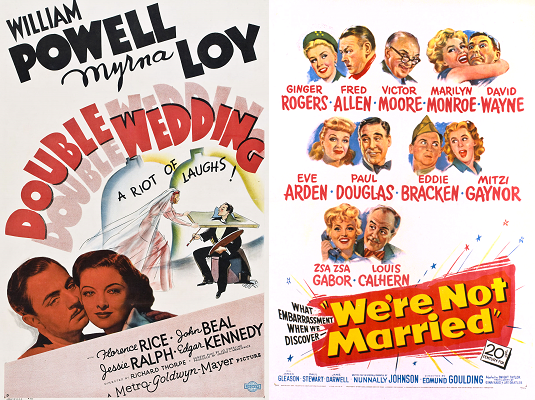
Toronto Film Society presented Double Wedding (1937) on Monday, April 23, 1990 in a double bill with We’re Not Married (1952) as part of the Season 42 Monday Evening Film Buffs Series “B”, Programme 8.
Double Wedding (1937)
Production Company: M.G.M. Producer: Joseph L. Mankiewicz. Director: Richard Thorpe. Screenplay: Jo Swerling, from Ferenc Molnar’s play, Great Love. Score: Edward Ward. Photography: William Daniels. Editor: Frank Sullivan. Art Direction: Cedric Gibbons.
Cast: William Powell (Charlie Lodge), Myrna Loy (Margit Agnew), Florence Rice (Irene Agnew), John Beal (Waldo Beaver), Jessie Ralph (Mrs. Kensington Bly), Edgar Kennedy (Spike), Sidney Toler (Keough), Mary Gordon (Mrs. Keough), Barnett Parker (Flint), Katharine Alexander (Claire Lodge), Priscilla Lawson (Felice).
We’re Note Married (1952)
Production Company: 20th Century-Fox. Producer: Nunally Johnson. Director: Edmund Goulding. Screenplay: Nunnally Johnson, Dwight Taylor, based on a story by Gina Kaus and Jay Dratler. Photography: Leo Tover. Art Director: Lyle R. Wheeler, Leland Fuller. Editor: Louis Loeffler. Score: Cyril Mockridge. Musical Director: Lionel Newman.
Cast: Ginger Rogers (Ramona), Fred Allen (Steve Gladwyn), Victor Moore (Justice of the Peace), Marilyn Monroe (Annabel Norris), David Wayne (Jeff Norris), Eve Arden (Katie Woodruff), Paul Douglas (Hector Woodruff), Eddie Bracken (Willie Fisher), Mitzi Gaynor (Patsy Fisher), Louis Calhern (Freddie Melrose), James Gleason (Duffy), Paul Stewart (Attorney Stone), Jane Darwell (Mrs. Bush), Lee Marvin (Pinky), O.Z. Whitehead (Postman), etc., etc.
As their titles suggest, both of these films are about marriage. But in spite of sharing a generally comic approach to their subject, the films are, in fact, immensely different. Each squarely represents the moment in the film history from which they sprang. Double Wedding is a product of the 1930s with its kinship to the Screwball Comedies of the period written boldly all over it. We’re Not Married, on the other hand, is an example of the multiple-episode films which 20th Century-Fox (and other studios) liked to make in the post-war years to show off their roster of stars in a single production. O. Henry’s Full House from the same year is another example of Fox’s interest in the genre.
Double Wedding‘s closest relative in the Screwball family is My Man Godfrey (1936). Critics of the time were quick to pick up on the fact that M.G.M. was eager to ride on the coat-tails of the overwhelming success of Universal’s Godfrey. After all, Godfrey‘s star, William Powell, had only been on loan from M.G.M., and M.G.M. executives believed (usually correctly) that anything that a less affluent studio like Universal could do they could do better. As usual, the smartly decorated sets (by the legendary Cedric Gibbons) are a tad more impressive (and expensive) than the competition’s.
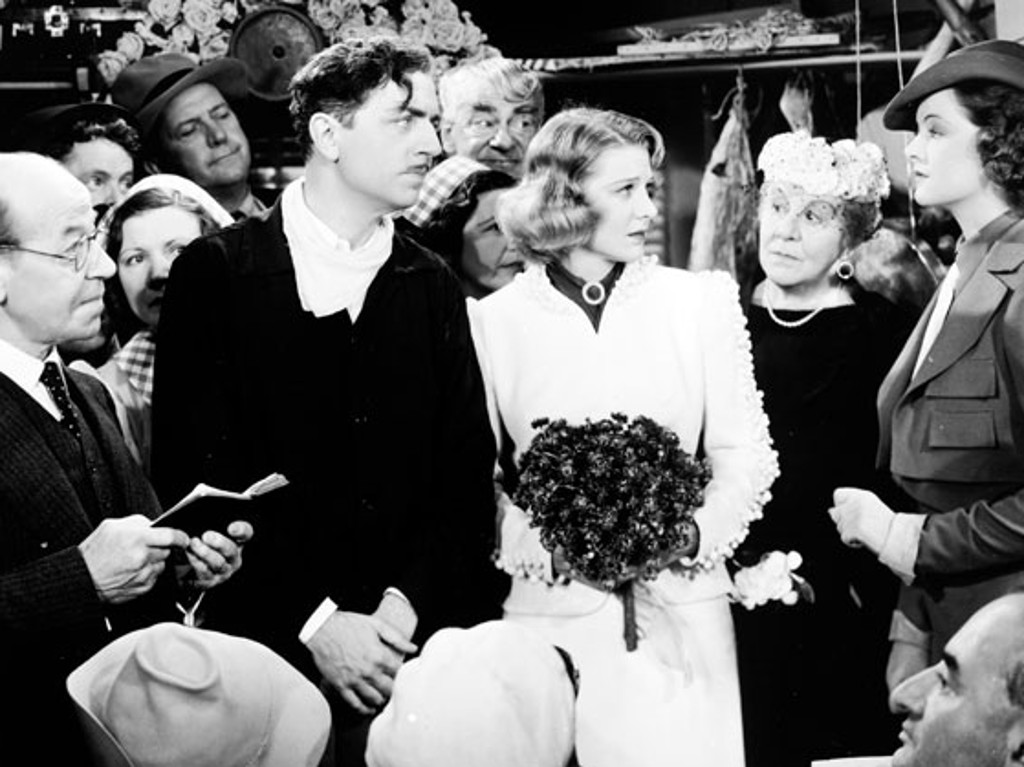
This time, instead of being a bum in a hobo yard, Powell is a vagabond artist in a trailer. But once again, a daffy young girl named Irene (ironically meaning “peace” in Ancient Greek) disrupts his life by falling for him. It is young Florence Rice who has this Carol Lombard role in Double Wedding, leaving the Gail Patrick role of the saner, more manipulative sister to Myrna Loy. But here the resemblances between Godfrey and Wedding end. You can imagine the rest of the intricate plot.
While the credits claim that all this was an adaptation of a Molnar play, it is clear that, at M.G.M. it became pure Hollywood. (Nevertheless, at least one critic spoke of the “archly European flavour” of the film!) There was, in fact, no uniformity in the critical reaction. One critic praised the film for its careful structure: from long stretches of detailed characterization, to an infusion of ridiculous situations, to a snappy finale. Another praised it for its lunacy and madcap slapstick. Another condemned it for being excessive in those very departments. Its message about the joys of non-conformity (Powell) and the dangers of stuffy repression (Loy) was largely ignored in favour of thoughts on generic origins and comic devices.
There was, however, one subject on which all critics agreed: the slick performances of stars Powell and Loy. This was their seventh film together, and their chemistry is, as usual, right up front–along with their flawless timing. Among their earlier films were such favourites as The Great Ziegfeld, Libeled Lady, and two of The Thin Man series. Powell’s performance in Double Wedding is particularly commendable, inasmuch as it was during its filming that his beloved Jean Harlow died. Loy came to Wedding from one of her most disastrous films of the 1930s, Parnell with Clark Gable. (Loy once joked to Rosalind Russell, who used to get the parts which she turned down, that it looked as though Russell couldn’t be located on the ay when the casting of Parnell was decided.) Double Wedding, happily, did o harm to the careers of either member of this unbeatable team! In fact, Loy would soon be making her own favourite film, Test Pilot, again with Gable–and with Spencer Tracy.
The episode-structured film, of which We’re Not Married is a classic example, is in some respects a precursor of the TV situation comedy. On TV, each film episode would become a half-hour programme. As proof of the point, one of the earliest of these films, If I Had a Million, did indeed become a television show in which each week a different astonished fictitious character received a million dollars from the same mysterious donor. Other films in the genre include Tales of Manhattan and The Yellow Rolls-Royce.
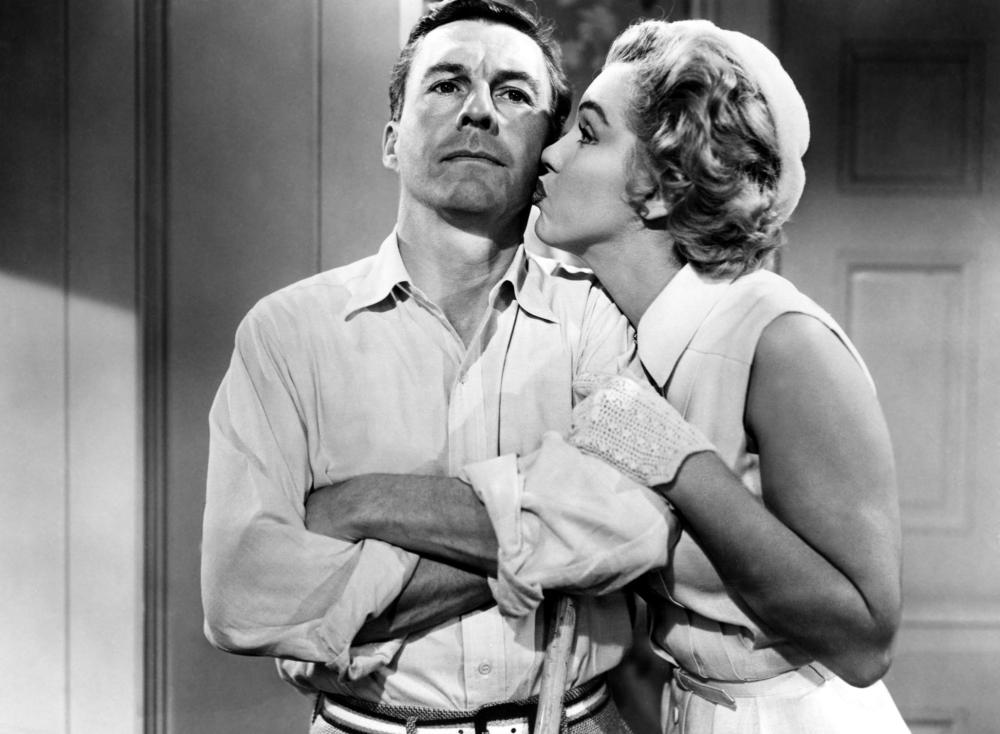
The five episodes of We’re Not Married are held together by the tidy plot device of a Justice of the Peace (the dithering Victor Moore) discovering that he has performed five marriages before his appointment was official. His announcement to each couple that they are, in fact, not married launches a series of delightful (and sometimes poignant) complications. The script by veterans Nunnally Johnson (The Grapes of Wrath) and Dwight Taylor (The Gay Divorcee) reflects the sensitivity of the former and the with of the latter.
Reviewers generally agreed that the most satisfying episode was the Ginger Rogers-Fred Allen pairing as a sweeter-than-sugar breakfast broadcast couple who, when off the air, do not speak. While this was, for Fred Allen, an unusual departure from radio and TV into big-budget film-making, We’re Not Married caught Ginger Rogers at one of the numerous peaks of her long film career. At Fox in 1952-53, she made a string of strong films which, sadly, became her last truly prestigious fling in front of the movie cameras. But along with We’re Not Married, such films as Monkey Business, Dreamboat, Forever Female, and Black Widow are projects of which nobody need feel ashamed. (Not true of some of Rogers’s subsequent efforts–aside from Oh Men! Oh Women! – 1957).
Of the other performers, Marilyn Monroe in a bathing suit as a beauty-contest aspirant is, of course, unforgettable. It was her 14th film in only a few years. Type-casting is rife throughout all the roles. Thus the performances of people like Eve Arden, Paul Douglas, Eddie Bracken, and Zsa Zsa Gabor are delightful but predictable. Part of the pleasure of the film, though, lies in seeing comic people we recognize from other films (the Douglas of A Letter to Three Wives or the Bracken of Hail the Conquering Hero, for instance) react to this particular problem.
A special word about the multi-talented Mitzi Gaynor. Gaynor is a perfect example of the merits and defects in the studio system of the early 1950s. Groomed by Fox under a long-term contract, she became, in films like Take Care of My Little Girl, a recognizable star of the second magnitude. But Fox never made enough musicals (at least without Gaye-Grable-Haver-Monroe blondes) to give Gaynor much of a chance to display her musical talents. Thus she was one of the first to be dropped when the studios suffered cutbacks. Ironically, it would be on television specials that the ageless Mitzi would finally be allowed to display her full capabilities.
These two films were made by directors who enjoyed long Hollywood careers without achieving top distinction. Expert technicians, neither one had anything like a personal style, Richard Thorpe made more than a hundred films for M.G.M. over a close-to-forty year career. But only a handful of his titles remain memorable: Night Must Fall, White Cargo, Ivanhoe, The Student Prince, and some of the best of the Tarzan and Esther Williams movies. Edmund Goulding adapted his style to each of the three studios for which he worked. Tus Grand Hotel epitomizes the M.G.M. style of 19332, while Dark Victory (1939) is typical of the Bette Davis films at Warner Bros., and The Razor’s Edge (1946) represents Fox at its most professional. While to-day’s films may not rank among these directors’ classics, they do rank among their most entertaining. To be enjoyed!
Notes by Cam Tolton

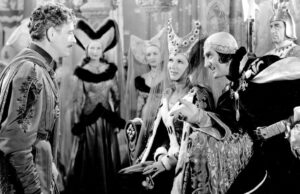
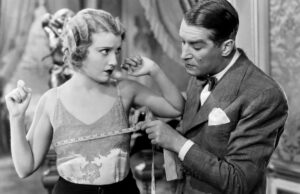
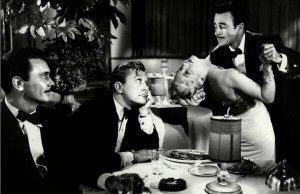






Leave a Reply